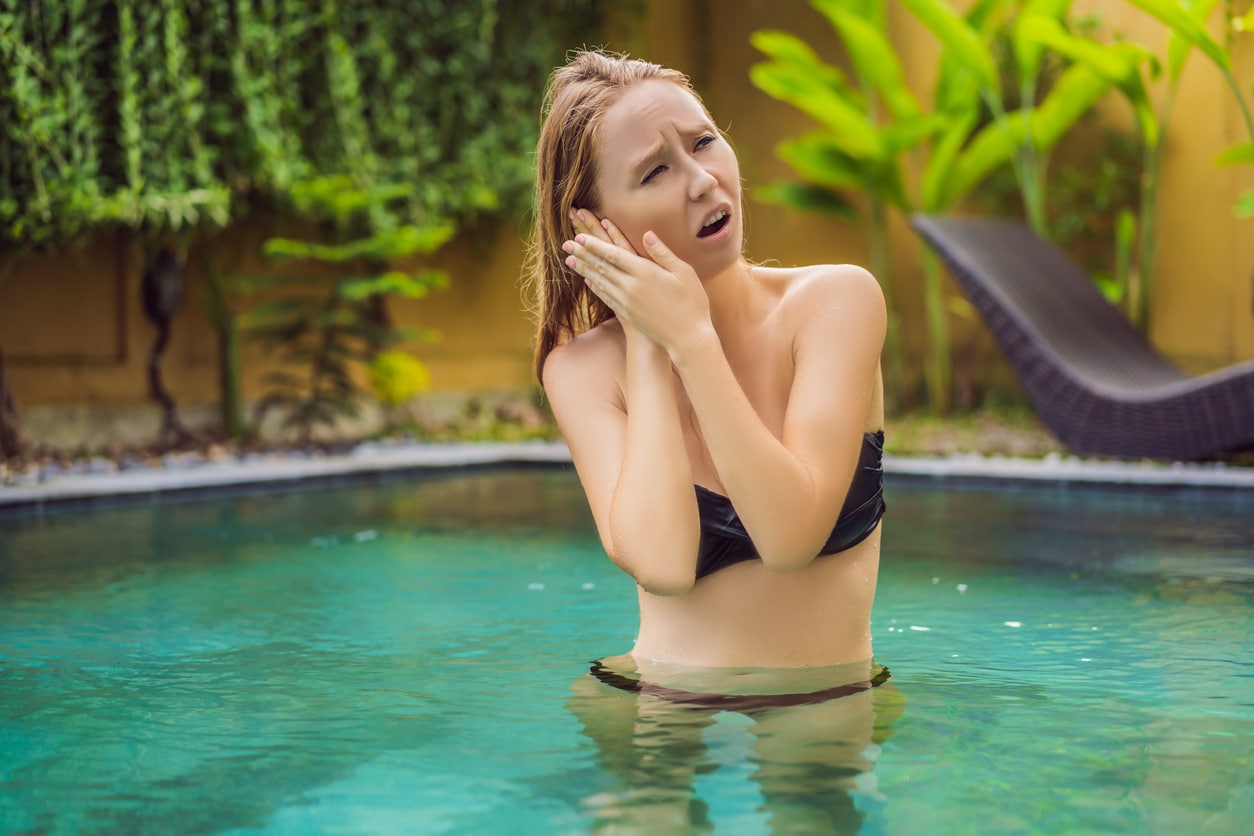Water can easily get trapped in your ears after a shower or swim. Knowing how to remove it safely and effectively is important to prevent complications. This guide will explain why water gets trapped in your ears, the importance of removing it promptly, and safe methods for doing so.
Understanding Water in Your Ears
The ear canal funnels sound to the eardrum, but its shape can sometimes trap water inside. Factors like excessive ear wax, narrow ear canals or improper ear-cleaning techniques can exacerbate the issue.
While the sensation of water in your ears might seem harmless initially, leaving it untreated can lead to discomfort, a feeling of fullness in the ear, and various complications. Prolonged moisture in the ear canal can create an ideal environment for bacteria and fungi, potentially leading to painful infections like swimmer’s ear. Additionally, water trapped in the ear can temporarily impair your hearing.
Safe Methods to Remove Water from Your Ears

If you experience water stuck in your ears after swimming at Northside Park Swimming Pool this summer, try these methods to remove it:
- Jiggling your earlobe: Gently tug or jiggle your earlobe while tilting your head to the side. This motion can help create a small vacuum that may dislodge the trapped water. Continue this movement for a few seconds, and then tilt your head to let the water drain out naturally.
- Let gravity do the work: Tilt your head to the side with the affected ear facing downward. Hold this position for a few moments to allow gravity to help drain the water out. You can also gently pull on your earlobe or tilt your head forward and backward to encourage the water to escape.
- Try eardrops or sprays: Over-the-counter eardrops or sprays designed specifically for removing water from the ears can be effective. Follow the instructions on the product label carefully. Typically, you’ll need to tilt your head to the side and instill a few drops of the solution into the affected ear. Allow the drops to sit for a few minutes before tilting your head to let the water and solution drain out.
While these methods are generally safe, consult your doctor if you experience persistent discomfort or a feeling of water trapped in your ears that doesn’t resolve. If you have a history of ear infections or other ear-related issues, seek medical advice before attempting any treatment.
Knowing how to safely remove water from your ears can help alleviate discomfort and prevent potential symptoms. By following these simple methods and seeking medical guidance when needed, you can keep your ears clear and healthy. To learn more or to schedule an appointment, contact Ear, Nose & Throat Associates today.